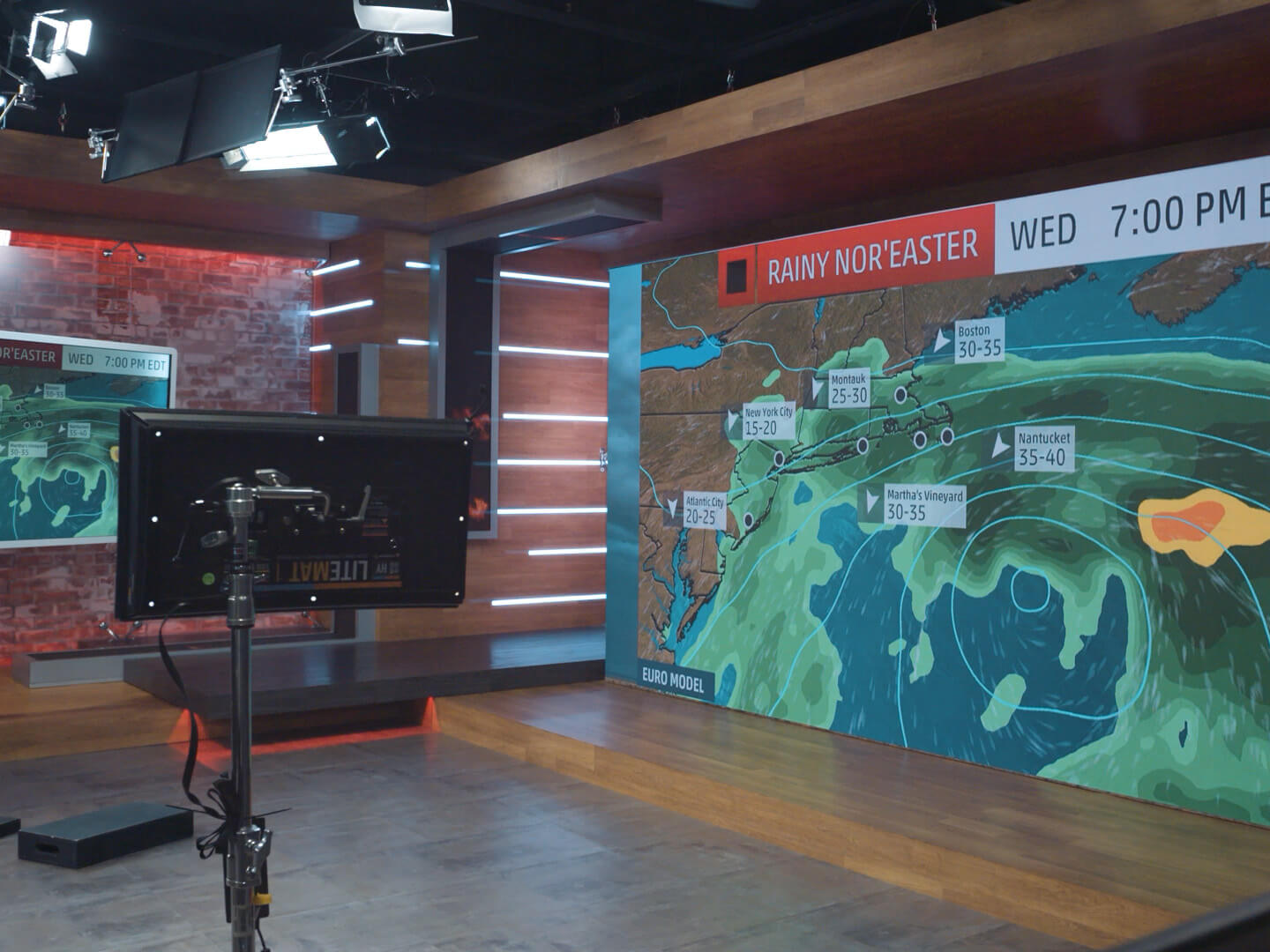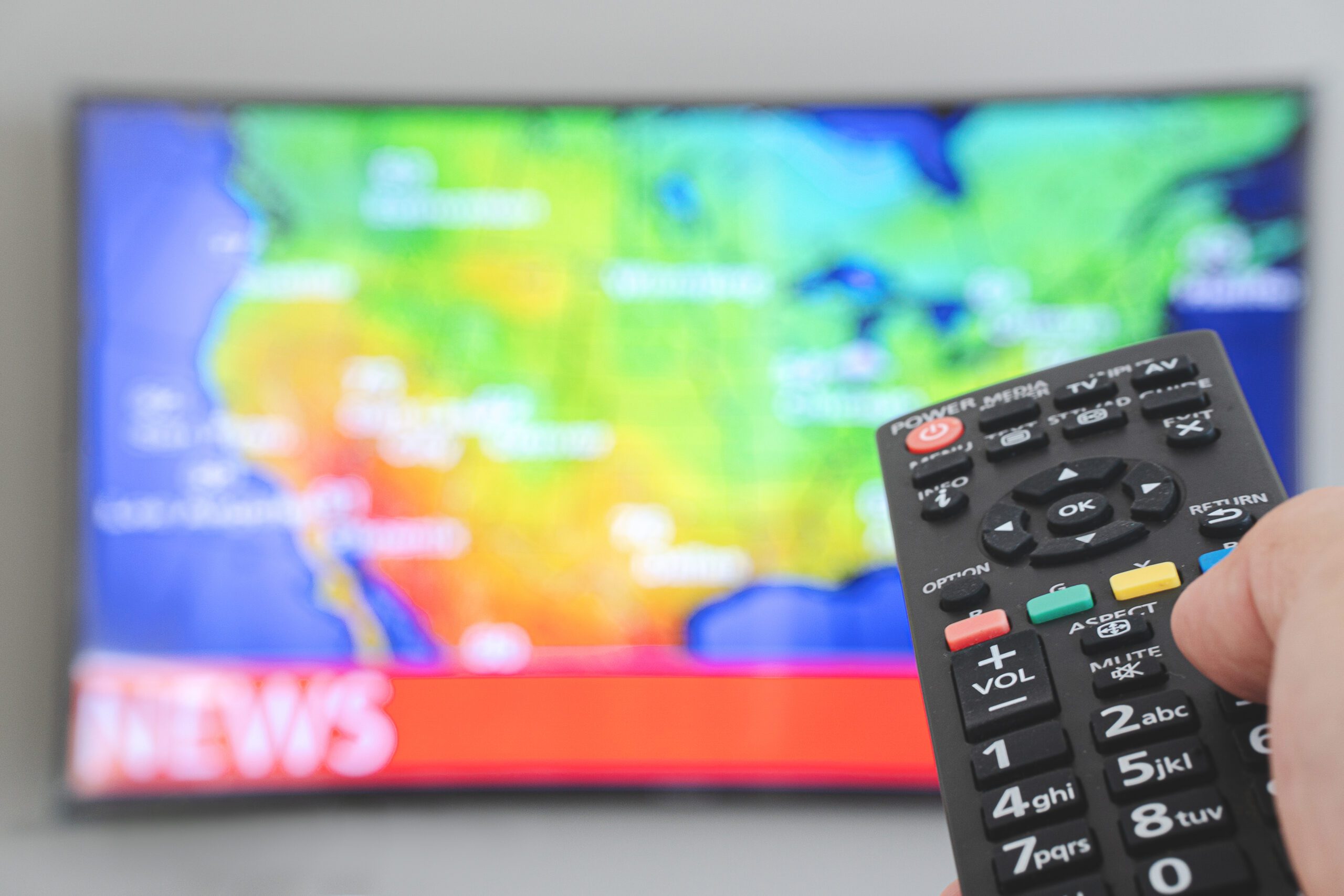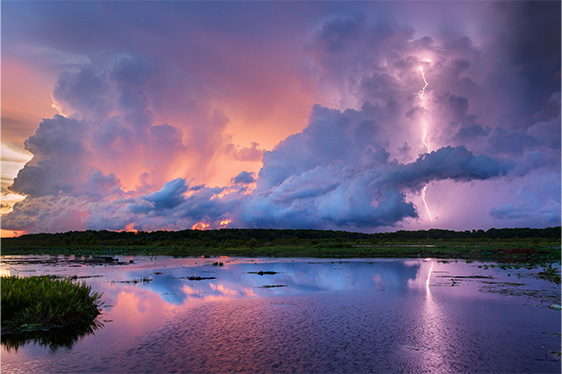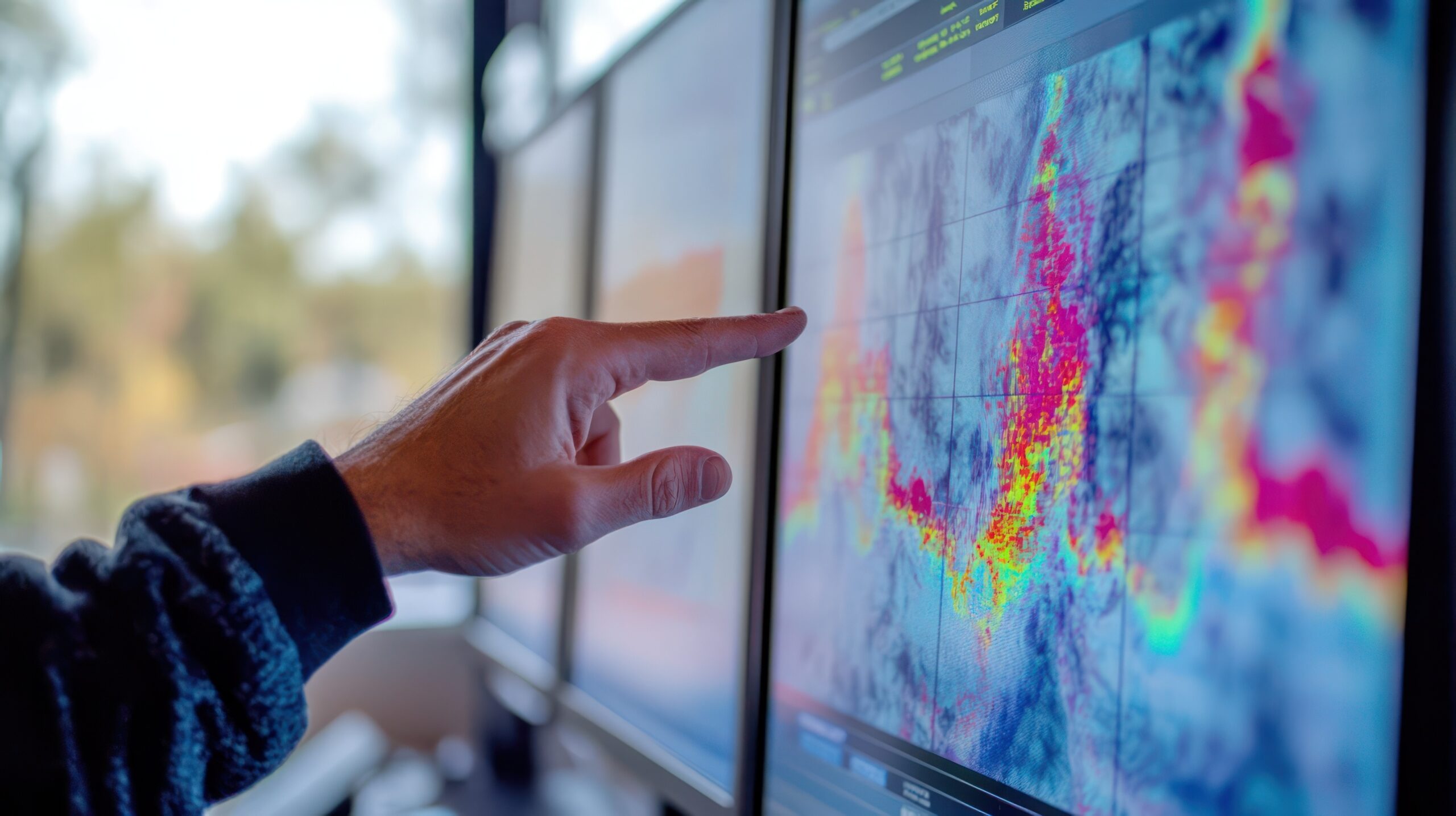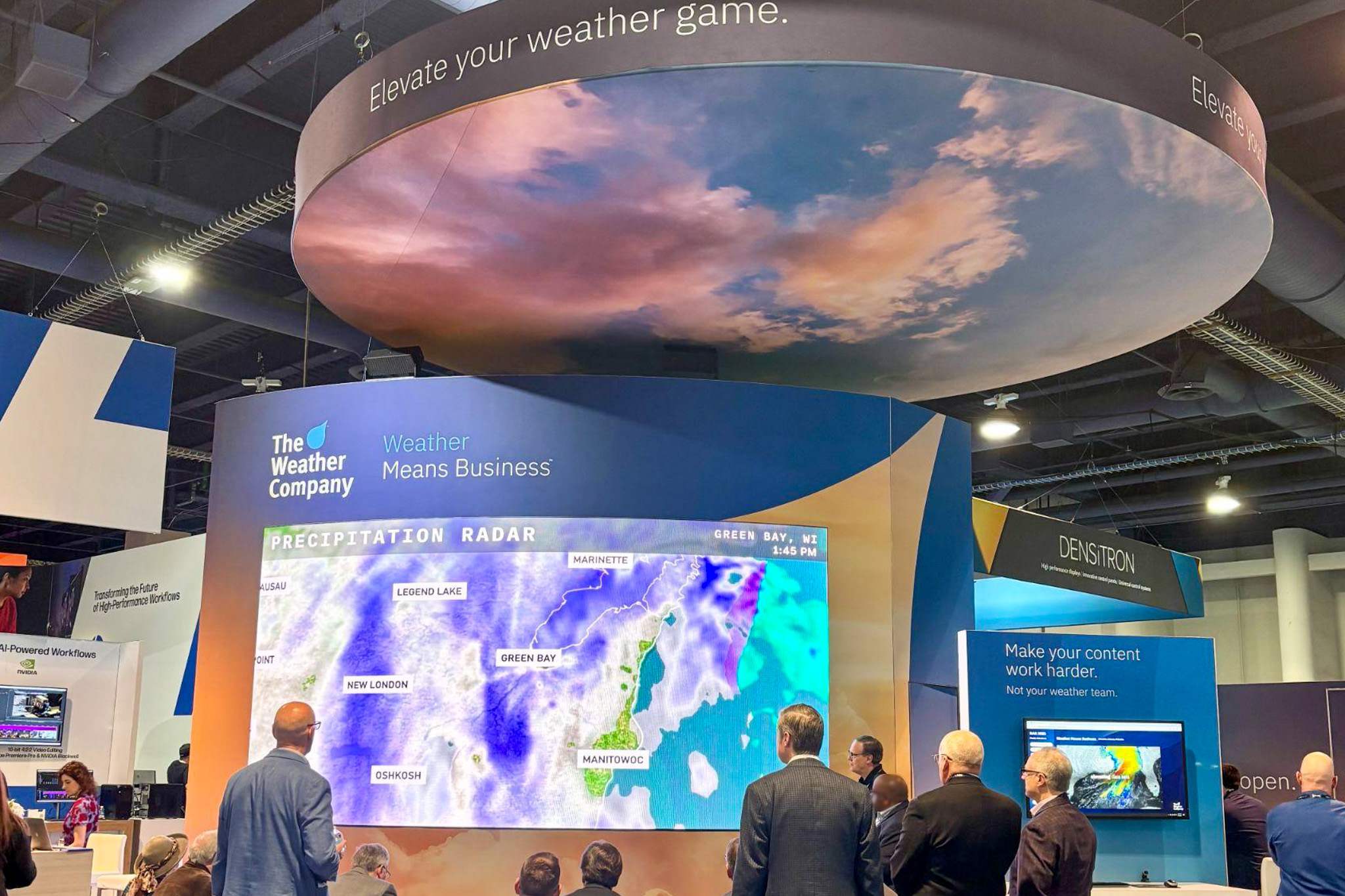Weather intelligence for the future: Crafting a strategic enterprise approach to changing environmental conditions
Continue readingWhen it comes to delivering accurate and engaging weather information, weather stations rely on a diverse range of software applications. These applications play a pivotal role in collecting, processing and presenting accessible meteorological data to the public. In this comprehensive guide, we explore the world of weather display software and its essential functions, helping you understand its significance in modern meteorology and broadcasting.
What software do weather stations use?
Weather stations rely on a variety of software applications to fulfill their tasks effectively. These applications can be broadly categorized into three main types:
Weather analysis software: Weather analysis software is the backbone of meteorological operations. It helps meteorologists collect, process, and analyze weather data from various sources. This software aids in creating weather forecasts and understanding atmospheric conditions. It uses sophisticated mathematical models and algorithms to make sense of the vast amount of data available.
Weather communication software: Weather communication software is designed to disseminate weather information to the public, via means including television broadcasts, websites, and mobile apps. This type of software focuses on making weather data understandable and accessible to a wide audience. Weather communication software often includes features for creating visually appealing weather graphics, which are vital for keeping viewers informed and engaged. This can also include automated weather forecast updates such as severe weather alerts.
Weather display software: Weather display software combines high-quality graphics and weather mapping software with accurate weather forecast data. This software aims to create visually compelling weather presentations for both on-air and digital platforms. It serves as a bridge between complex meteorological data and the general public, making weather information more accessible and engaging.
What is weather display software used for?
Weather display software has a wide range of applications, each contributing to the effectiveness of weather reporting and forecasting. Let’s explore some key functions that empower meteorologists and broadcasters to provide crucial weather information to the public with precision and clarity:
Communicating weather updates with weather graphics
Weather graphics are indispensable tools for forecasters to effectively convey weather information to viewers. At their simplest level, these graphics use symbols like raindrops and sun icons to represent weather conditions. However, with technological advancements, meteorologists can now incorporate visual elements like augmented reality, 3D imagery, and interactive features into their broadcasts, making their segments more visually appealing and informative. By employing weather graphics, meteorologists engage audiences and provide clear, data-driven weather forecasts based on real-time data from various sources.
These graphics play a significant role in enhancing viewer engagement, fostering audience loyalty, and bolstering the credibility of meteorologists and news stations.
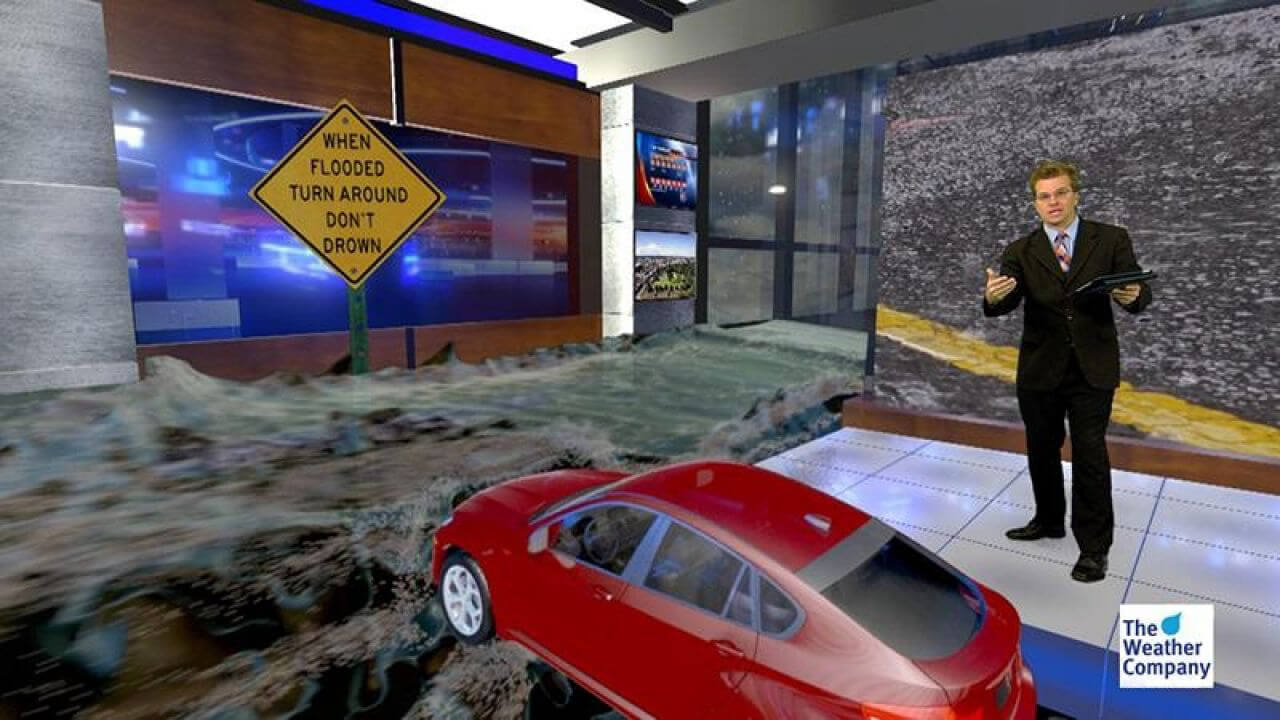
Weather forecasting
Weather display software aids meteorologists in producing accurate and timely weather forecasts. By visualizing complex weather data and trends, forecasters can predict changes in the atmosphere, precipitation and temperature. Accurate forecasting is vital for community preparedness, safety and decision-making.
Weather display software also often includes advanced weather mapping features. These maps provide visual representations of weather patterns, temperature variations and other meteorological data. Weather mapping enhances the overall presentation of weather forecasts and allows meteorologists to help viewers pinpoint the weather impact location. This is especially important for tornadic activity where seconds count.
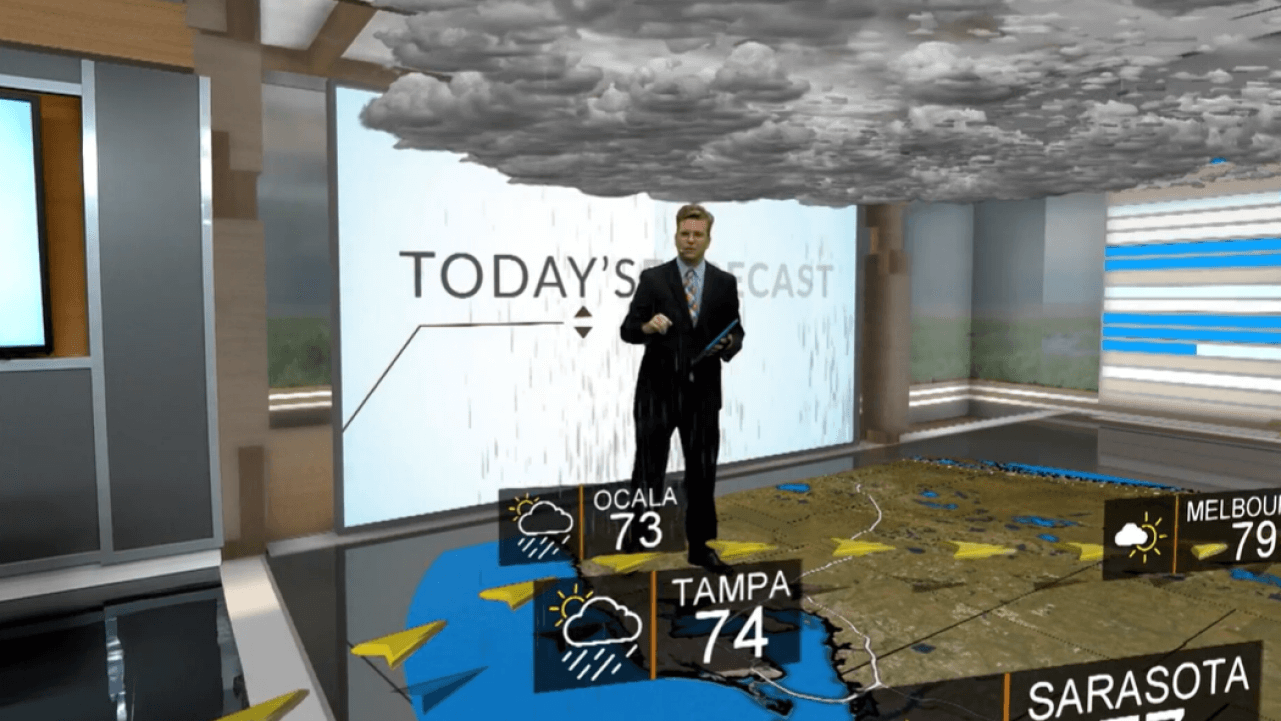
Creating strong visuals with weather radar
Weather radar technology has evolved significantly over the years. 3D weather radar technology extends coverage in three dimensions, encompassing depth and elevation. This advanced capability equips newsrooms to craft comprehensive and engaging narratives that resonate with their audience. For example, Max Storm, a powerful weather display software, offers stunning 3D weather visualizations and accurate data, allowing broadcasters to engage their audience in real-time.
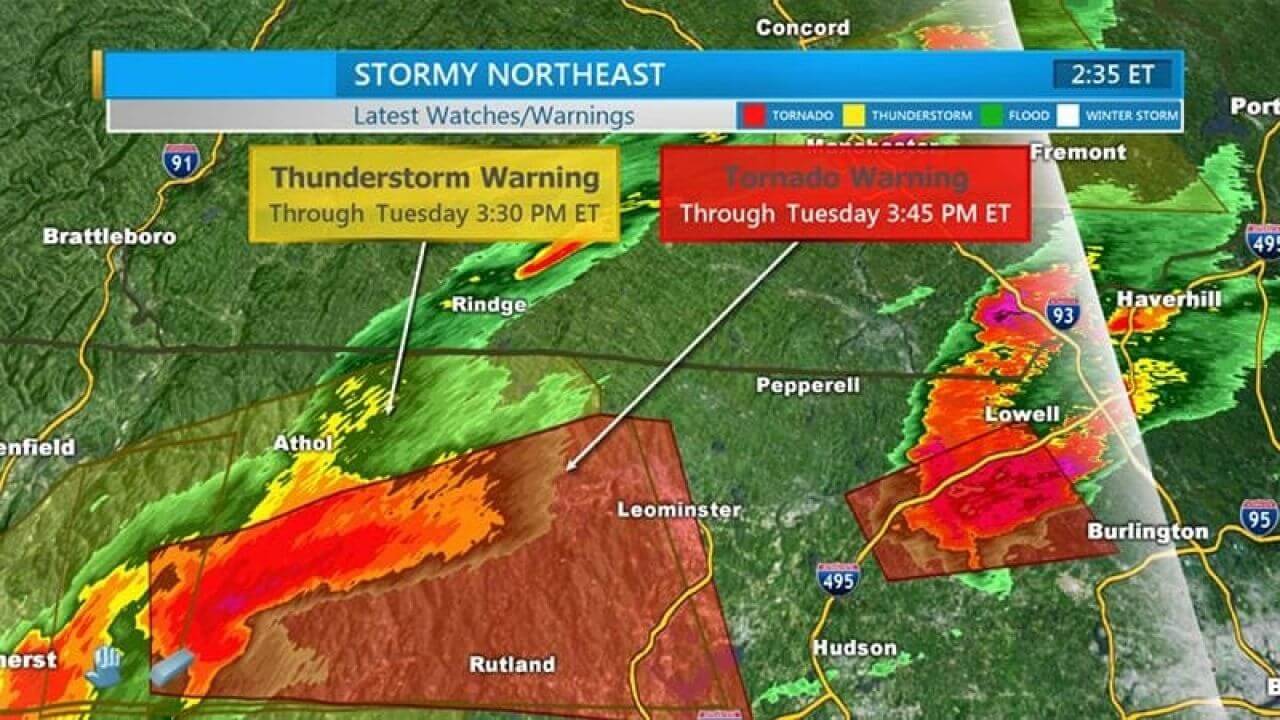
Showcasing traffic updates
Weather display software can also integrate with traffic data, helping commuters plan their routes effectively. By showing traffic patterns, overlaying weather data and suggesting alternate routes, broadcasters’ reports become vital for viewers, fostering loyalty and engagement. By distributing real-time traffic reports across various platforms, including social media, mobile and the web, broadcasters can expand their reach and provide valuable information to their audience.
Weather maps
Weather visualization and map software can make it easier for viewers to understand the impact of weather on their communities. Landscape mapping can help viewers comprehend how weather affects the physical environment, while 3D weather radar can further illustrate the vertical distribution of precipitation.
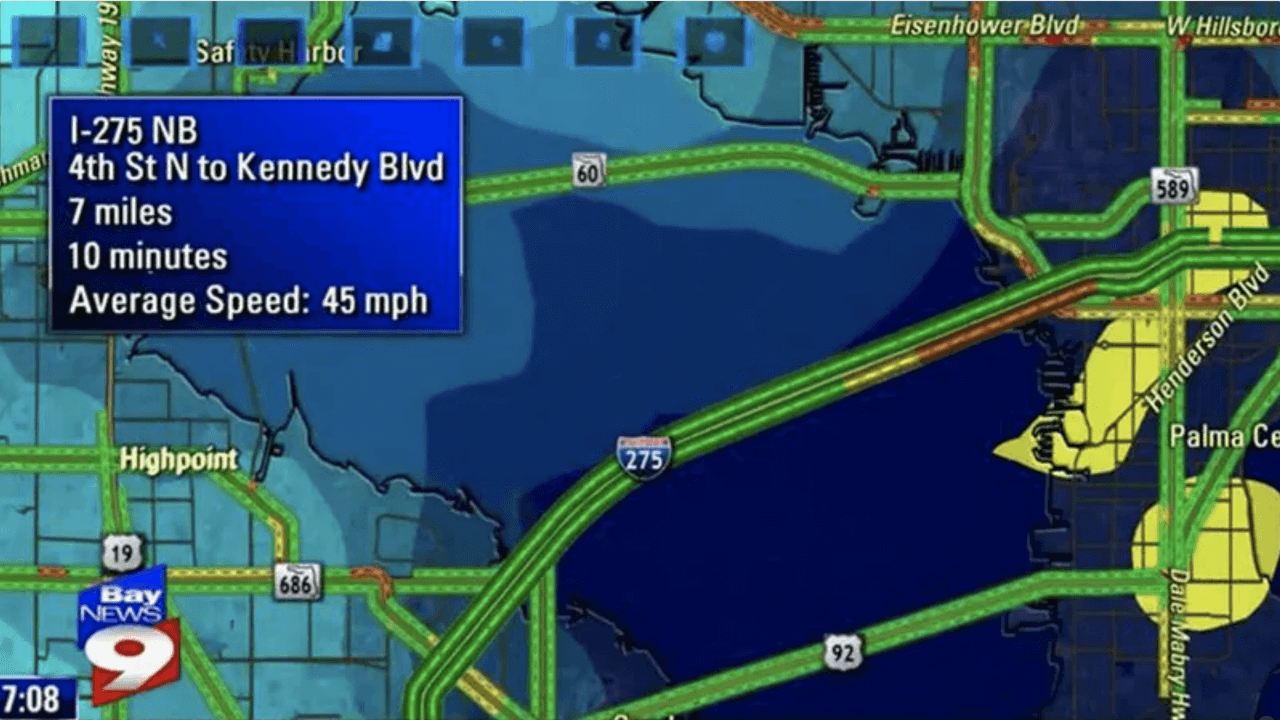
How to choose the right weather display software
Selecting the right weather display software for your organization is crucial for delivering accurate and engaging weather information. Consider these factors to help you align your decision with your specific weather communication and forecasting needs and objectives:
Accuracy
Selecting the right weather display software is a critical step in ensuring reliable and accurate weather forecasts. Most advanced software allows meteorologists to select and compare various forecasting models. Based on their knowledge and expertise, they then choose the one they believe to be the most accurate and tweak it as needed. What’s most important is that the software has global models, like Global High-Resolution Atmospheric Forecasting System (GRAF), that have consistently outperformed other models.
Accurate weather display software empowers meteorologists to visualize and interpret intricate weather data. By utilizing high-quality graphics and interactive features, meteorologists can engage viewers and provide clear, data-driven forecasts based on real-time data from various sources. This level of accuracy enhances viewer trust and loyalty while ensuring that communities receive timely information for making informed decisions in response to changing weather conditions.
Cloud capabilities
Cloud-based weather display software offers several advantages for broadcasters. Firstly, it enables rapid response to breaking news and weather alerts, allowing teams to collaborate on video production and publish essential information swiftly. This speed is particularly crucial in capturing viewer attention during weather reporting.
Additionally, cloud-based production tools make it possible to create videos from virtually anywhere, eliminating the need for specialized equipment and training. Broadcasting teams can produce content remotely, enhancing flexibility in news and weather reporting.
Scalability
Like your other technology tools, your weather display software should scale up with your organization. Adding new stations to your group or additional segments to your broadcasts shouldn’t be a strain on your infrastructure. Additionally, you should be able to expand into new geographies without a hassle. Look for software solutions that deliver even sophisticated outputs like augmented reality imagery with minimal latency, no matter where the software is deployed.
Ease of use
Weather display software should be easy to learn and operate. Look for software solutions that offer streamlined training and minimal complexity. Having all of your weather products under the same system simplifies operations and reduces the need for additional staff who specialize in the specific tool.
Capabilities
Consider the specific capabilities offered by weather display software. For example, Max Storm provides cutting-edge features like a new lightning counter, parameters for Significant Tornado, Significant Hail, and Supercell Composite storms, easy-changing radar moments with a single click, revamped palette displays and customizable toolbars. Assess whether these capabilities align with your organization’s needs and objectives. The right tool is also highly customizable, allowing meteorologists and broadcasters the ability to account for the weather patterns in their region and branding when displaying information.
What does the future of weather display software look like?
The future of weather display software holds the potential for even more advanced capabilities. Here are some trends and developments to watch for as this technology continues to evolve and shape the field of meteorology and weather reporting:
Broadcast templates
Broadcast templates are a standardized structure for the visual elements of a broadcast. Their adoption is on the rise in part because they enable quick adaptation to changing news and weather stories across different channels.
They’re also valuable for cross-channel content creation, catering to varying viewer preferences. By automating branding efforts and maintaining a consistent look, templates enhance brand recognition and engagement. Additionally, in the context of severe weather presentations, broadcast templates play a critical role in delivering easy-to-understand, timely and engaging severe weather graphics to inform and protect viewers.
More sophisticated weather maps
The demand for finer weather details at a more local level is on the rise. Viewers expect accurate weather forecasts tailored to their specific locations. Sophisticated weather mapping capabilities will play a crucial role in meeting this demand. These maps provide viewers with detailed information about weather conditions in their immediate vicinity, enhancing the relevance and usefulness of the forecasts.
The emphasis on accuracy will remain a top priority. Meteorologists will continue to leverage technology and data to make precise predictions. The use of AI-driven forecast models and machine learning will further improve forecasting accuracy, ensuring that viewers receive timely and reliable weather information. Ultimately, the future of weather display software is all about delivering personalized, detailed and timely weather information to help viewers plan their day.
Max platform’s weather display software capabilities
In the realm of weather display software, The Weather Company offers several standout products that cater to different needs. Let’s delve into some of these offerings:
Max Storm: Max Storm is a powerful tool designed to enhance your coverage of severe weather events. It brings a combination of striking visualizations, precise data, and streamlined weather broadcast workflows to both on-air broadcasts and digital platforms. With real-time 3D weather radar and imagery, it engages audiences with compelling mobile content and promotes live broadcasts effectively. Max Storm doesn’t stop there; it offers advanced features like the Storm Slicer and Data Scope, enabling meteorologists to create captivating 3D weather visuals and swiftly deliver critical severe weather alerts and warnings to the airwaves.
MAXimum Earth: MAXimum Earth is your gateway to comprehensive global weather data. It opens the doors for organizations to access accurate weather visualizations from around the world. Its expansive range of weather-related data empowers meteorologists to tell effective, eye-catching stories.
Max Traffic: Max Traffic seamlessly integrates weather and data into 3D traffic forecasts, aiding commuters in planning efficient routes. Broadcasters can expand their reach by distributing real-time traffic reports across various platforms, including social media, mobile apps and websites, thereby providing valuable information to their audience.
Max Sky: Max Sky delivers realistic city skyviews paired with engaging weather information. With more than 200 cloud templates, advanced particle animations and atmospheric effects, broadcasters can stand out in their local market and offer a differentiated weather presentation to their viewers.
Frequently asked questions
When it comes to accuracy in weather forecasting, The Weather Company consistently comes out on top. In 2022, The Weather Company consistently achieved over three times higher top rankings globally across all forecast lead days (1-9) than any other weather provider included in ForecastWatch’s Global and Regional Weather Forecast Accuracy Overview, commissioned by The Weather Company.
Yes, many products within The Weather Company’s Max suite are cloud-based, so they can be used from virtually anywhere at any time. This flexibility is particularly valuable for news and weather reporting teams who need to respond quickly to changing conditions.
Yes, cloud-based weather display software updates automatically, eliminating the need for manual updates. This ensures that you always have access to the latest weather data and features without interruption.
Weather reporting relies on a combination of software applications, including weather analysis software, weather communication software and weather display software. Some solutions encompass all four of these applications to collect, analyze and communicate weather information to the public effectively.
Weather stations use various software applications, including weather analysis software, weather communication software and weather display software. These applications help meteorologists collect, analyze and present weather data accurately.
Let's talk
To learn more about our professional weather and traffic software solutions for the media industry, contact our media experts today.
Contact us
